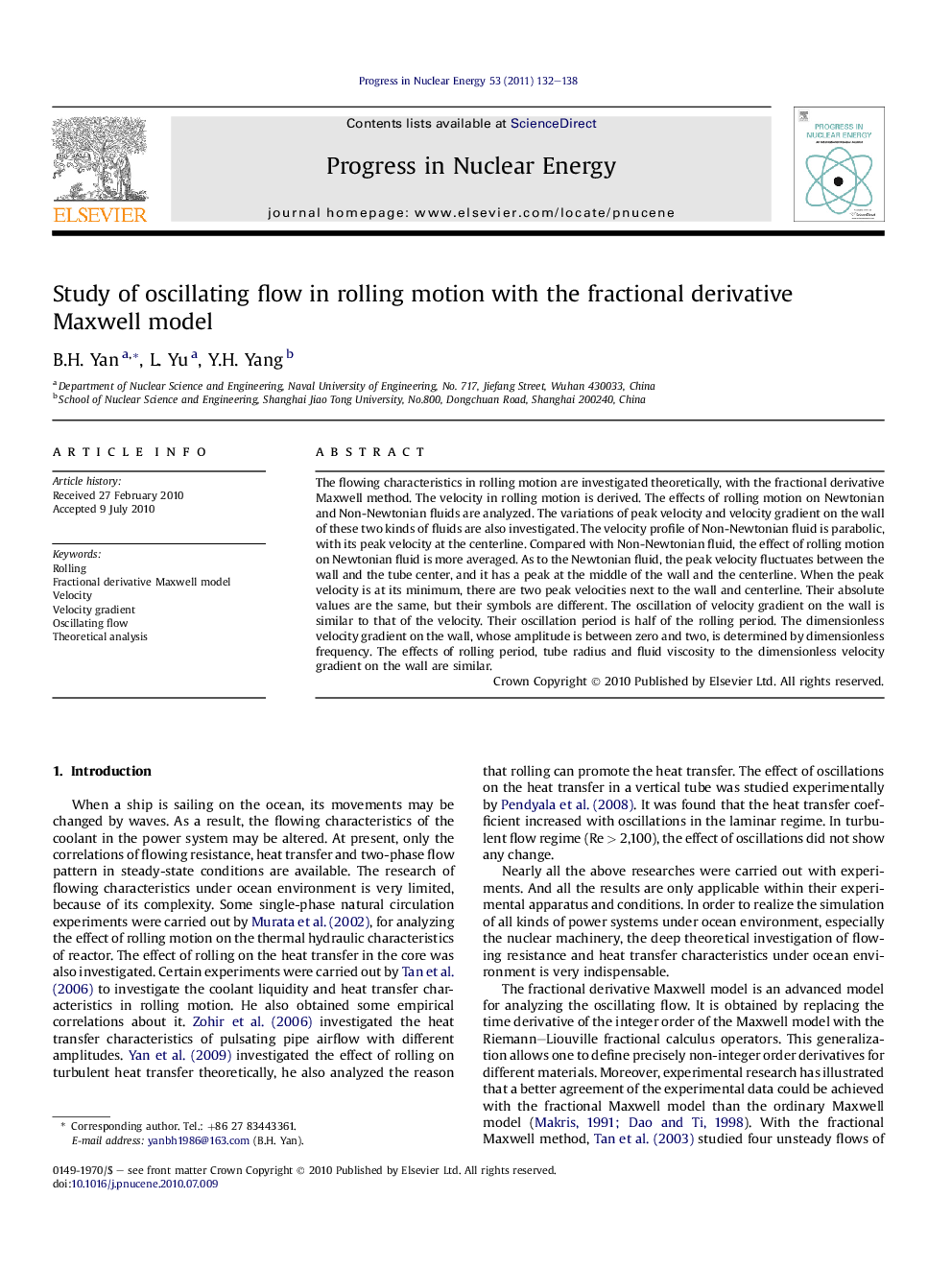| Article ID | Journal | Published Year | Pages | File Type |
|---|---|---|---|---|
| 1741363 | Progress in Nuclear Energy | 2011 | 7 Pages |
The flowing characteristics in rolling motion are investigated theoretically, with the fractional derivative Maxwell method. The velocity in rolling motion is derived. The effects of rolling motion on Newtonian and Non-Newtonian fluids are analyzed. The variations of peak velocity and velocity gradient on the wall of these two kinds of fluids are also investigated. The velocity profile of Non-Newtonian fluid is parabolic, with its peak velocity at the centerline. Compared with Non-Newtonian fluid, the effect of rolling motion on Newtonian fluid is more averaged. As to the Newtonian fluid, the peak velocity fluctuates between the wall and the tube center, and it has a peak at the middle of the wall and the centerline. When the peak velocity is at its minimum, there are two peak velocities next to the wall and centerline. Their absolute values are the same, but their symbols are different. The oscillation of velocity gradient on the wall is similar to that of the velocity. Their oscillation period is half of the rolling period. The dimensionless velocity gradient on the wall, whose amplitude is between zero and two, is determined by dimensionless frequency. The effects of rolling period, tube radius and fluid viscosity to the dimensionless velocity gradient on the wall are similar.
